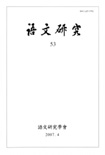- 영문명
- Translation of Western Fairy Tales in 1920’s and Desire of the Subject of Translation ― Centering on Grimm fairy tales in Dongmyeong
- 발행기관
- 어문연구학회
- 저자명
- 김화선(Hwa-Seon Kim) 안미영(Mi-Young Ann)
- 간행물 정보
- 『어문연구』語文硏究 第53輯, 331~355쪽, 전체 25쪽
- 주제분류
- 어문학 > 한국어와문학
- 파일형태
- 발행일자
- 2007.04.30

국문 초록
영문 초록
The purpose of this thesis is to research meaning of translation of Grimm fairy tales translated in Dongmyeong at 1923. Sixteen pieces of Grimm fairy tales were presented to Dongmyeong published by Nam-sun Choi.
The translation is the act of transferring from a language to another language. The translation of western fairy tales in 1920’s was complicated because it included the gaze of modern subject and language and culture of the Western. Through the process of modernization in Korea, the subject is a core of modernity that has been broken up. If we don’t suppose Otherness, we can’t find the childhood. The children who have been produced by separation between adult and child were a mirror.
Along with the introduction of western fairy tales, Korean literary fairy tales were gathered by Gaebyuk at 1923. Fairy tales have relevance to nation and ethnic.
Therefore the translation of Grimm fairy tales are very important meanings. Especially Frog Princess, one of the Grimm fairy tales has been translated in Dongmyeong and Eoriny. A translator of Dongmyeong translated Grimm fairy tales with versatility unlike Jeong-whan, Bang of Eoriny. Sixteen pieces of Grimm fairy tales were presented to Dongmyeong showed the point of coexistence with instruction and aesthetic autonomy at 1920’s. That is the unconsciousness of translation of Grimm fairy tales. In addition, A translator of Dongmyeong translated Grimm fairy tales created abundant narrative discourse.
The translation is the act of transferring from a language to another language. The translation of western fairy tales in 1920’s was complicated because it included the gaze of modern subject and language and culture of the Western. Through the process of modernization in Korea, the subject is a core of modernity that has been broken up. If we don’t suppose Otherness, we can’t find the childhood. The children who have been produced by separation between adult and child were a mirror.
Along with the introduction of western fairy tales, Korean literary fairy tales were gathered by Gaebyuk at 1923. Fairy tales have relevance to nation and ethnic.
Therefore the translation of Grimm fairy tales are very important meanings. Especially Frog Princess, one of the Grimm fairy tales has been translated in Dongmyeong and Eoriny. A translator of Dongmyeong translated Grimm fairy tales with versatility unlike Jeong-whan, Bang of Eoriny. Sixteen pieces of Grimm fairy tales were presented to Dongmyeong showed the point of coexistence with instruction and aesthetic autonomy at 1920’s. That is the unconsciousness of translation of Grimm fairy tales. In addition, A translator of Dongmyeong translated Grimm fairy tales created abundant narrative discourse.
목차
1. 서론
2. 『東明』과 1920년대, 그림동화의 번역
3. 『東明』에 번역된 그림동화의 특성
4. 동화의 번역, 번역의 무의식
5. 결론
참고문헌
Abstract
2. 『東明』과 1920년대, 그림동화의 번역
3. 『東明』에 번역된 그림동화의 특성
4. 동화의 번역, 번역의 무의식
5. 결론
참고문헌
Abstract
키워드
해당간행물 수록 논문
참고문헌
최근 이용한 논문
교보eBook 첫 방문을 환영 합니다!

신규가입 혜택 지급이 완료 되었습니다.
바로 사용 가능한 교보e캐시 1,000원 (유효기간 7일)
지금 바로 교보eBook의 다양한 콘텐츠를 이용해 보세요!


